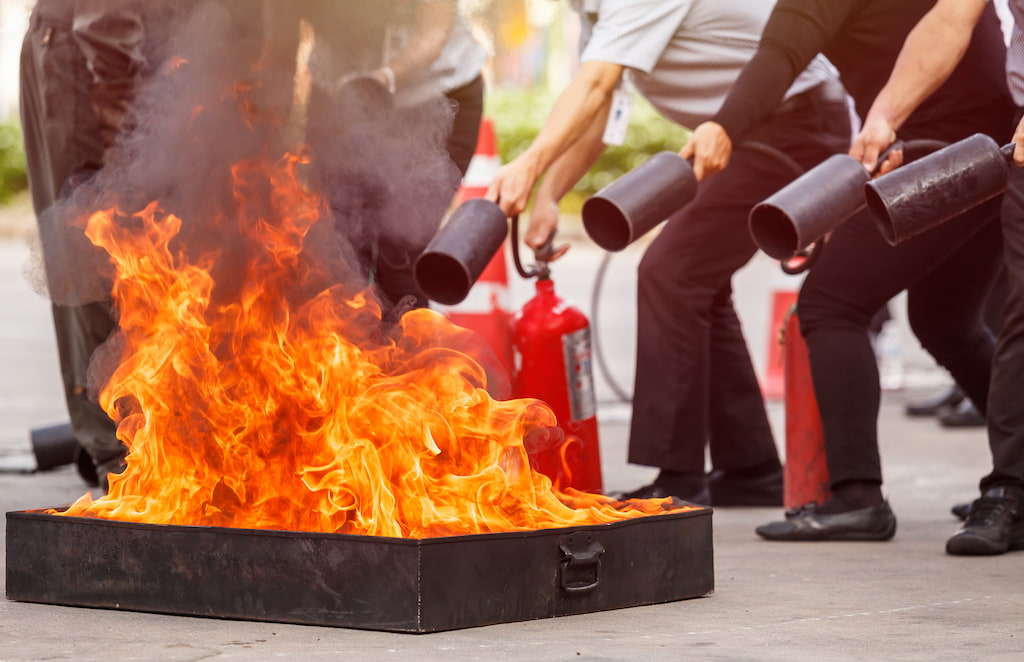Fire safety is a crucial aspect of maintaining a secure and healthy environment, whether at home, in the workplace, or in public spaces. Fires can occur unexpectedly, causing severe damage to property, endangering lives, and leaving lasting psychological effects. Proactive fire safety measures are the best way to prevent fires and mitigate their effects. This article outlines key principles and strategies for fire safety that everyone should be aware of.
1. Prevention: The First Line of Defense
The first and most effective step in fire safety is prevention. By reducing the risk of fire, we can protect ourselves, our families, and our communities from disaster.
a. Regular Maintenance and Inspections
Ensure that electrical wiring, heating systems, and appliances are inspected and maintained regularly. Faulty electrical systems are a major cause of house fires, so it is essential to repair any exposed wires, broken circuits, or malfunctioning appliances.
b. Safe Cooking Practices
Kitchen fires are common and often occur due to unattended cooking. Never leave cooking food unattended, and keep flammable materials like dish towels or oven mitts away from the stove. Ensure that your kitchen has a working fire extinguisher and know how to use it.
c. Flammable Materials Storage
Store flammable materials, such as gasoline, solvents, or cleaning agents, in proper containers and away from heat sources. Ensure that combustible materials like paper, cloth, or wood are not left near heating appliances, electrical devices, or open flames.
d. Smoking Safety
If you smoke, do so responsibly. Never discard cigarette butts or matches near flammable materials, and always ensure they are fully extinguished before disposal. Smoking-related fires are a significant cause of injury and property damage.

2. Fire Protection: Making Your Environment Safe
While prevention is key, it is equally important to have fire protection systems in place. These systems provide early detection, quick response, and a safer escape in case of fire.
a. Install Smoke Detectors
Smoke detectors are an essential part of fire safety. Install smoke alarms on every level of your home, particularly near sleeping areas. Test alarms monthly and replace the batteries at least once a year. Modern interconnected smoke detectors can alert everyone in the building simultaneously, offering more effective warning.
b. Fire Extinguishers
Every home, office, and public space should have at least one fire extinguisher. Place them in easily accessible locations, such as near the kitchen, garage, and near exit doors. Ensure that everyone knows how to use an extinguisher, using the PASS method: Pull, Aim, Squeeze, and Sweep.
c. Fire Sprinklers
In larger buildings, especially commercial spaces, fire sprinkler systems are critical. These systems automatically activate when they detect high heat levels, controlling fires until emergency services arrive.
d. Fire-Resistant Materials
Consider using fire-resistant materials in construction and renovation projects. Fire-resistant doors, windows, and roofing materials can significantly slow down the spread of fire and provide more time for evacuation.
3. Fire Safety Procedures: Knowing What to Do in an Emergency
In the event of a fire, having a clear plan and knowing the right steps can save lives. Preparation and awareness are vital to effectively responding to a fire emergency.
a. Develop an Evacuation Plan
Every household and workplace should have a fire evacuation plan. This plan should include multiple escape routes, especially if certain exits are blocked. Ensure that everyone in your home or workplace is familiar with the plan, and practice fire drills regularly to ensure quick, efficient evacuations.
b. Stay Low and Move Quickly
If trapped in a burning building, remember that smoke rises, so the air near the floor is usually clearer. Crawl low under the smoke to reach an exit, covering your nose and mouth with a cloth to filter out smoke particles.
c. Use the Stairs, Not Elevators
In case of a fire, never use elevators. They can become inoperative, malfunction, or become trapped in smoke. Always use the stairs and evacuate quickly.
d. Call for Help
If you cannot escape safely, call emergency services and provide them with your exact location. If possible, signal for help from a window, but never attempt to re-enter a burning building.

4. Fire Safety for Specific Groups: Special Considerations
Certain groups of people may need additional fire safety measures to stay protected.
a. Fire Safety for Children
Children should be taught about fire safety from an early age. Teach them how to stop, drop, and roll if their clothing catches fire, and ensure they know how to evacuate the home during a fire emergency. Keep matches, lighters, and other fire safety equipment out of reach.
b. Fire Safety for Elderly and Disabled Individuals
Older adults and people with disabilities may require extra assistance during a fire evacuation. Ensure that their mobility aids (such as wheelchairs or walkers) are accessible and plan for caregivers to help them evacuate in case of fire.
c. Fire Safety in Schools and Workplaces
In schools and workplaces, fire drills and safety protocols are essential. Ensure that employees and students are trained to recognize fire hazards and know the procedures for safely evacuating the building. Identify fire exits, assemble areas, and keep fire alarms functional.

5. Conclusion: Fire Safety is Everyone’s Responsibility
Fire safety is not just about preventing fires but also being prepared to respond effectively if one occurs. By following the preventive measures, installing safety systems, and having a clear evacuation plan in place, we can significantly reduce the risk of fires and minimize their impact.
Remember, fires can spread quickly, and early detection can make all the difference. Whether at home or in the workplace, staying vigilant and prepared is the key to protecting lives and property. By practicing good fire safety habits, we contribute to a safer and more secure environment for everyone.


